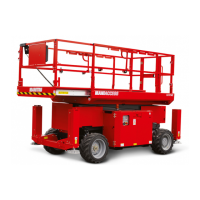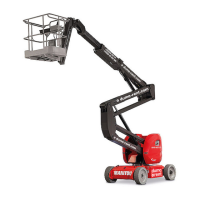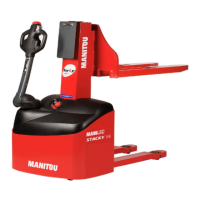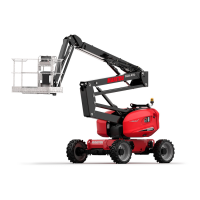2-34
LOWERING
- When the work is complete: lower the scissors assembly to bring the platform into Transport position.
Pay attention to anyone present on the ground at the time of your descent, especially when the extension is extended.
STOPPING THE PLATFORM
- When the platform is not being used, switch it off by setting the ignition switch to the Neutral position (see 13 – Ignition Switch).
LOADING / UNLOADING THE LIFTING PLATFORM
Check that the safety instructions relating to the truck bed have been correctly
applied before loading the lifting platform and ensure that the transport vehicle’s
driver is aware of the lifting platform’s dimensional characteristics and its weight
(see the CHARACTERISTICS section).
- When loading the lifting platform on to a truck bed, the platform must be in Transport position:
- The steered wheels must be facing the ramp (see 1 – Safety instructions and advice; SAFETY
STICKERS Section; item 1).
- The extension must be retracted and locked in place.
Ensure that the truck bed is large enough and has a sufficient load capacity to
transport the lifting platform. Also check the truck bed’s permissible ground
contact pressure with regard to the lifting platform.
There is a risk of the lifting platform losing adherence (sliding or slipping) when going up or down the loading ramps,
when these are wet, muddy or damp. It is therefore necessary to ensure the platform’s stability with a winch attached to
the lash-down points on the machine.
LOADING
- Fix the loading ramps to the truck bed so as to have the smallest angle possible for loading the machine (Fig D).
- Chock the truck bed’s wheels Rep. 1 (Fig D).
Please adapt the lifting platform’s translation speed by controlling it with the translation joystick.
D
1
647367 (01/03/2017)
100/120 SC-2 / 140 SC

